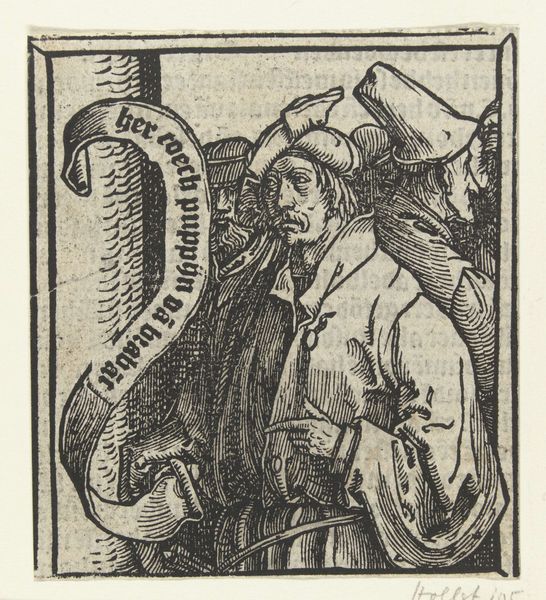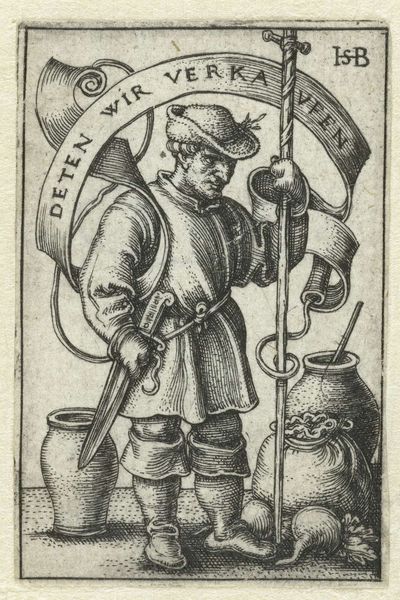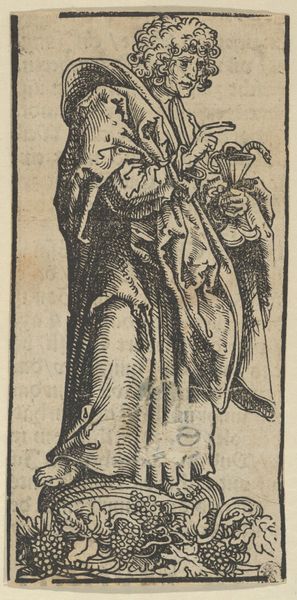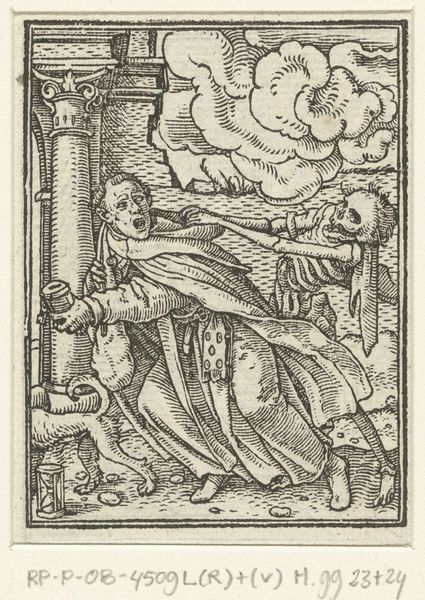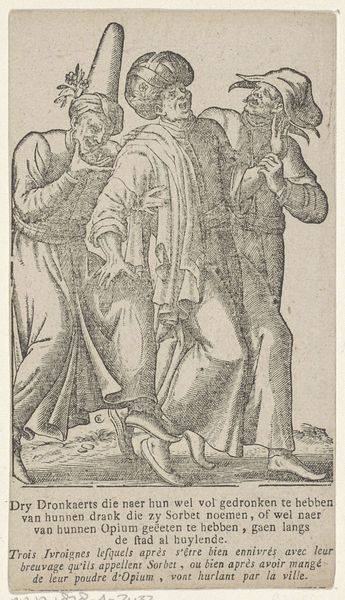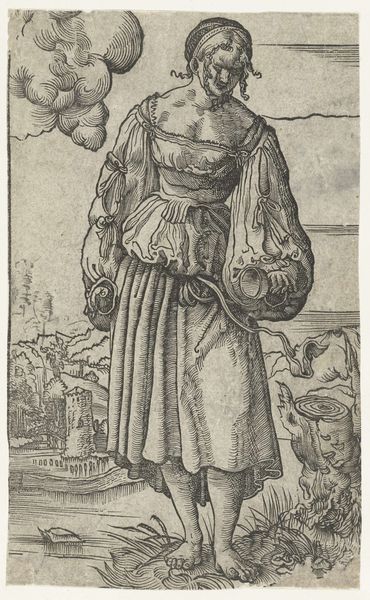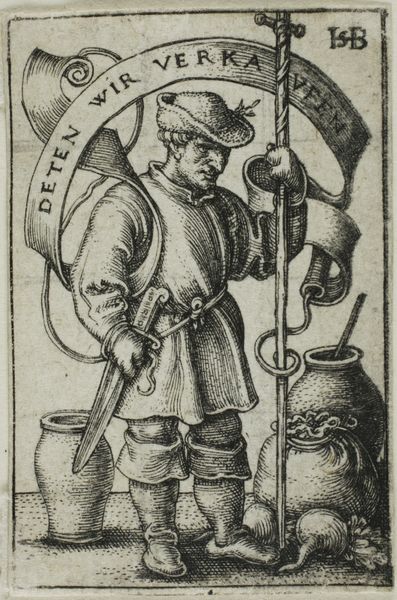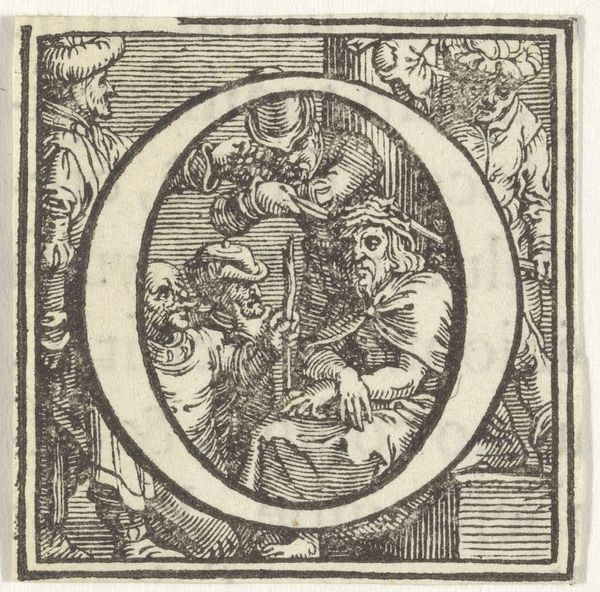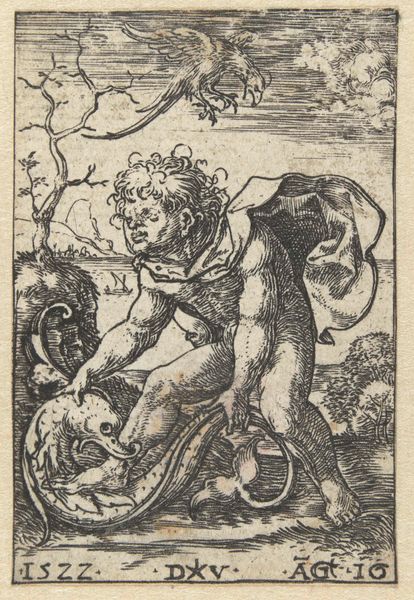
drawing, print, engraving
#
portrait
#
drawing
# print
#
figuration
#
line
#
northern-renaissance
#
engraving
Dimensions: height 93 mm, width 84 mm
Copyright: Rijks Museum: Open Domain
Editor: We're looking at a 16th-century engraving here at the Rijksmuseum: "Portrait of Duke Pepin of Brabant," created between 1513 and 1517 by Lucas van Leyden. It's an intricate, almost chaotic image. What jumps out at you when you look at this? Curator: It feels like stepping into a dream, doesn’t it? Van Leyden’s world is a dense tapestry of lines, almost feverish in their intensity. There's this Duke Pepin, rendered with a rather unflattering realism amidst a flurry of surrounding figures and forms. What strikes me is the palpable energy, a raw and somewhat unsettling quality achieved through this very deliberate, almost obsessive detail. Do you notice how the line seems to vibrate? Editor: Absolutely, the hatching creates a certain visual tension. And there are so many faces crammed in! I'm curious, do you think this is meant to be an accurate portrait or something more symbolic? Curator: Ah, the eternal question! I believe it's both. Certainly, there’s an attempt at capturing the Duke’s likeness. But Van Leyden isn’t just interested in mere representation. He's capturing something of the Duke's essence, perhaps even hinting at the complexities of power and the weight of leadership. Those figures surrounding him, are they supporters, advisors, or perhaps even the pressures he faces? What do you feel looking at the faces? Editor: They definitely add a sense of drama, almost a claustrophobic feel. It's much more layered than a typical portrait of the time. Curator: Exactly. Van Leyden has given us more than just a face. He’s offered a glimpse into a world, a state of mind. The Duke’s slightly weary expression seems to tell its own story of the man, and of the burdens of leadership. Editor: I see what you mean. I initially just saw a crowded image, but I now see so many stories within it. Curator: It’s a reminder that even the most seemingly straightforward portraits can be profound reflections, or in this case refractions, of history and humanity. It reminds me to bring compassion when I read history and consider art.
Comments
No comments
Be the first to comment and join the conversation on the ultimate creative platform.
